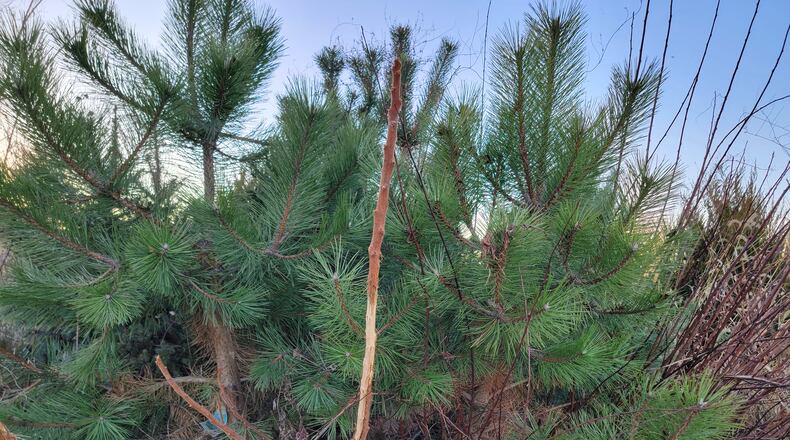White-tailed deer are quite common around the area and it’s highly possible that a deer has run into your car or caused damage in your landscape. As their habitat shrinks, they move into urban areas, becoming quite comfortable in our landscapes.
Deer or “buck rub” can damage young, thin-barked trees and evergreens. They are particularly damaging to arborvitae and taxus, with deer rub and eating the foliage.
Credit: Contributed
Credit: Contributed
As mentioned above, in the fall, male deer rub their antlers on the trunks of trees to remove the velvet layer that coats them. According to a University of Missouri (go Bucks) Extension fact sheet, deer grow and shed antlers yearly.
In the spring and summer, as they grow, they are covered with a “hairlike membrane” that is known as velvet. As antlers mature in the fall, they harden, and the velvet sloughs off. Deer rubs in the fall result in polished hard antlers for the breeding season.
Good for the deer, bad for our plants. Many of our landscape plants keep living or recover from deer eating the foliage, but they may not recover from deer rub.
The deer use the trunks of thin-barked trees and shrubs that are two inches or less in diameter to accelerate the removal of the velvet. The result is usually that the bark and cambium layer of the trunk is damaged and left with an open wound.
This wound may close on its own, but it depends on the size and the amount of bark removed. For instance, a small rub may result in little damage but a large rub, especially if it encircles the entire trunk, is devastating.
In my landscape, I have had a little of both. I have a pussy willow that is quite large and has annual deer rub. I don’t mind on this plant because it grows quickly, and I remove the branches that are damaged without too much worry.
On the other hand, one year they took out a beautiful ‘Silberlock’ Korean fir that was doing quite well in the landscape. This unusual fir had gotten about five feet tall and was beautiful. They took off all the branches and the trunk was severely damaged. It eventually died.
Credit: Contributed
Credit: Contributed
I have found that over the years, fencing or complete exclusion from these trees is the most useful in preventing damage. They don’t like to have anything interfere with their antlers.
In some cases, I have staked the tree on three sides, and they tend to stay away from this. I have a very young buckeye tree, approximately 3 feet tall, where they started to rub and break off the side branches.
I immediately put a protective plastic screen around the tree. However, about two inches of the top stuck out above the screen. They came back the next night and finished off the terminal bud and tissue.
Oh well, the joys of dealing with critters! I learn so much!
Pamela Corle-Bennett is the state master gardener volunteer coordinator and horticulture educator for Ohio State University Extension. Contact her by email at bennett.27@osu.edu.
About the Author



